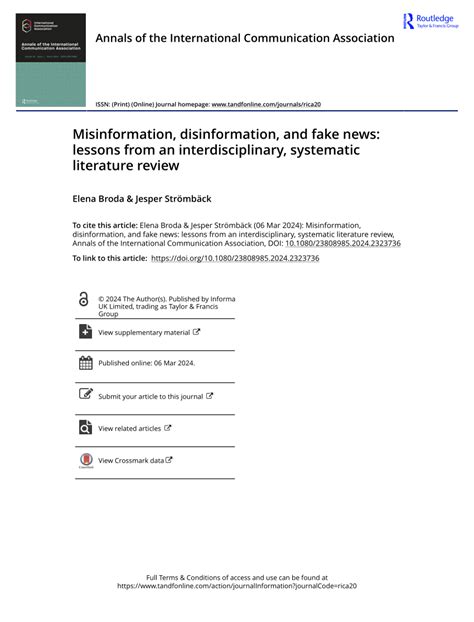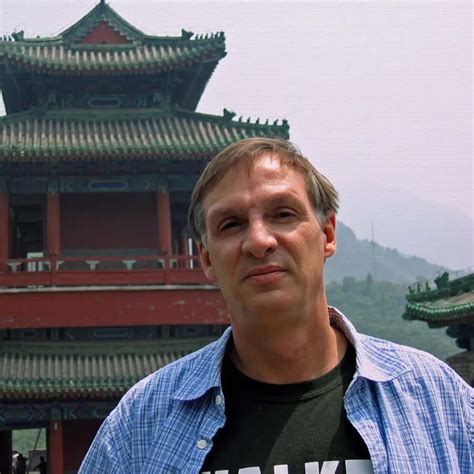john herman on fake news | Fake news from Africa: Panics, politics and paradigms john herman on fake news Elections in countries such as Zimbabwe, South Africa, Kenya and Nigeria were marred by the indiscriminate sharing of fake news and cyber-propaganda by cyber troops, citizen campaigners and digital influencers on social media platforms. Gorod.lv — информационно-новостной портал Даугавпилса и Латгалии. Самый популярный русскоязычный новостной портал ежедневно посещает более 30 тысяч человек. Статистика посещений сайта по данным Яндекса. Портал Gorod.lv работает с 13 февраля 2004 года. Первая новость в архиве: 11.05.2004 . .
0 · The Internet Made 'Fake News' a Thing—Then Made It Nothing
1 · Post
2 · Misinformation, disinformation, and fake news: lessons from an
3 · John E. Herman
4 · How to hijack a discourse? Reflections on the concepts of post
5 · Full article: “Fake News” and Cyber
6 · Fake news from Africa: Panics, politics and paradigms
7 · Combating Fake News: An Agenda for Research and Action
8 · An Exploratory Study of “Fake News” and Media Trust in Kenya,
Common signs of heart failure can include: Shortness of breath. Tiredness, weakness. Swelling in your feet, ankles, legs, or abdomen. Lasting cough or wheezing. Fast or irregular heartbeat..
The moral panic about ‘fake news’ has not been limited to the United States but has formed the backdrop and discursive reference point for debates about the impact of the spread of similar fabrications on politics in South Africa, where a sudden and steep proliferation of fake news websites as well as fake social media accounts have raised . The moral panic about ‘fake news’ internationally has formed the backdrop for debates about the impact of the spread of similar fabrications on politics in South Africa. News – whether ‘fake’ or ‘r. Elections in countries such as Zimbabwe, South Africa, Kenya and Nigeria were marred by the indiscriminate sharing of fake news and cyber-propaganda by cyber troops, citizen campaigners and digital influencers on social media platforms. In recent years, concerns about the perceived increase in the amount of “fake news” have become prevalent in discussions about media and politics, particularly in the United States and Europe. However, debates around “fake news”, even if some object to the use of the term due to it being loosely defined, appear to speak of processes .
Herrman details the platform’s plague of ideologically-themed pages that become a primary vector for sensationalized "news" and worse, though he doesn't use the phrase "fake news." Two days. First, to systematically review research on misinformation, disinformation and fake news from a cross-disciplinary perspective. Second, based on the systematic literature review, to identify key research gaps and research problems, and thereby give an outlook in terms of avenues for future research.
The aim of this paper is threefold: to perform a (meta)discursive archaeology of the concepts post-truth and fake news, to critically reflect on the change in the application of these concepts.Recent shifts in the media ecosystem raise new concerns about the vulnerability of democratic societies to fake news and the public's limited ability to contain it. Fake news as a form of misinformation benefits from the fast pace that information travels in today's media ecosystem, in particular across social media platforms. Fake news and post-truth signal a crisis of the liberal democratic system of public communication. Donald Trump has used ‘fake news’ to dismiss established journalism, whereas his critics have used the term to characterise the false information circulating in the right-wing online media sphere (Farkas and Schou, 2018).Herman’s research interests focus on Late Imperial Chinese history (900-1800), in particular Ming (1368-1644) and Qing (1636-1912) history, frontiers and border regions, ethnohistory, economic and environmental history, colonial discourse studies, and historical sociology.
The moral panic about ‘fake news’ has not been limited to the United States but has formed the backdrop and discursive reference point for debates about the impact of the spread of similar fabrications on politics in South Africa, where a sudden and steep proliferation of fake news websites as well as fake social media accounts have raised . The moral panic about ‘fake news’ internationally has formed the backdrop for debates about the impact of the spread of similar fabrications on politics in South Africa. News – whether ‘fake’ or ‘r. Elections in countries such as Zimbabwe, South Africa, Kenya and Nigeria were marred by the indiscriminate sharing of fake news and cyber-propaganda by cyber troops, citizen campaigners and digital influencers on social media platforms. In recent years, concerns about the perceived increase in the amount of “fake news” have become prevalent in discussions about media and politics, particularly in the United States and Europe. However, debates around “fake news”, even if some object to the use of the term due to it being loosely defined, appear to speak of processes .
Herrman details the platform’s plague of ideologically-themed pages that become a primary vector for sensationalized "news" and worse, though he doesn't use the phrase "fake news." Two days.
The Internet Made 'Fake News' a Thing—Then Made It Nothing

Post
First, to systematically review research on misinformation, disinformation and fake news from a cross-disciplinary perspective. Second, based on the systematic literature review, to identify key research gaps and research problems, and thereby give an outlook in terms of avenues for future research. The aim of this paper is threefold: to perform a (meta)discursive archaeology of the concepts post-truth and fake news, to critically reflect on the change in the application of these concepts.

Recent shifts in the media ecosystem raise new concerns about the vulnerability of democratic societies to fake news and the public's limited ability to contain it. Fake news as a form of misinformation benefits from the fast pace that information travels in today's media ecosystem, in particular across social media platforms.
Fake news and post-truth signal a crisis of the liberal democratic system of public communication. Donald Trump has used ‘fake news’ to dismiss established journalism, whereas his critics have used the term to characterise the false information circulating in the right-wing online media sphere (Farkas and Schou, 2018).Herman’s research interests focus on Late Imperial Chinese history (900-1800), in particular Ming (1368-1644) and Qing (1636-1912) history, frontiers and border regions, ethnohistory, economic and environmental history, colonial discourse studies, and historical sociology. The moral panic about ‘fake news’ has not been limited to the United States but has formed the backdrop and discursive reference point for debates about the impact of the spread of similar fabrications on politics in South Africa, where a sudden and steep proliferation of fake news websites as well as fake social media accounts have raised .
The moral panic about ‘fake news’ internationally has formed the backdrop for debates about the impact of the spread of similar fabrications on politics in South Africa. News – whether ‘fake’ or ‘r. Elections in countries such as Zimbabwe, South Africa, Kenya and Nigeria were marred by the indiscriminate sharing of fake news and cyber-propaganda by cyber troops, citizen campaigners and digital influencers on social media platforms. In recent years, concerns about the perceived increase in the amount of “fake news” have become prevalent in discussions about media and politics, particularly in the United States and Europe. However, debates around “fake news”, even if some object to the use of the term due to it being loosely defined, appear to speak of processes .
Herrman details the platform’s plague of ideologically-themed pages that become a primary vector for sensationalized "news" and worse, though he doesn't use the phrase "fake news." Two days. First, to systematically review research on misinformation, disinformation and fake news from a cross-disciplinary perspective. Second, based on the systematic literature review, to identify key research gaps and research problems, and thereby give an outlook in terms of avenues for future research. The aim of this paper is threefold: to perform a (meta)discursive archaeology of the concepts post-truth and fake news, to critically reflect on the change in the application of these concepts.
Recent shifts in the media ecosystem raise new concerns about the vulnerability of democratic societies to fake news and the public's limited ability to contain it. Fake news as a form of misinformation benefits from the fast pace that information travels in today's media ecosystem, in particular across social media platforms. Fake news and post-truth signal a crisis of the liberal democratic system of public communication. Donald Trump has used ‘fake news’ to dismiss established journalism, whereas his critics have used the term to characterise the false information circulating in the right-wing online media sphere (Farkas and Schou, 2018).

Misinformation, disinformation, and fake news: lessons from an

sacchetto lv
Immersive Engineering 0.6.5.1 Immersive Integration 0.6.6. I'm playing on the Infinity Evolved 2.3.5 (latest and last version before 1.8.9 update) It may have changed values, i'll try to find them. All reactions. . Output"=1.0 # In- and output rates of LV,MV and HV Wire Conenctors. This is independant of the transferrate of the wires.
john herman on fake news|Fake news from Africa: Panics, politics and paradigms



























